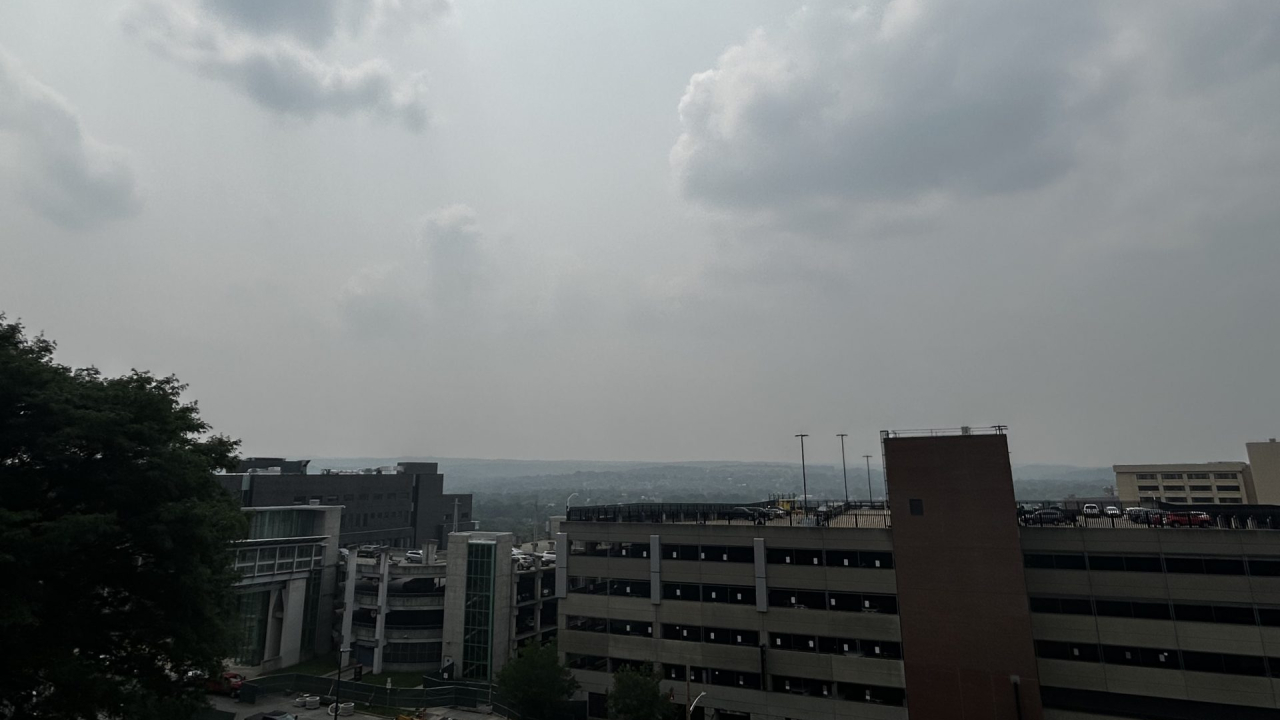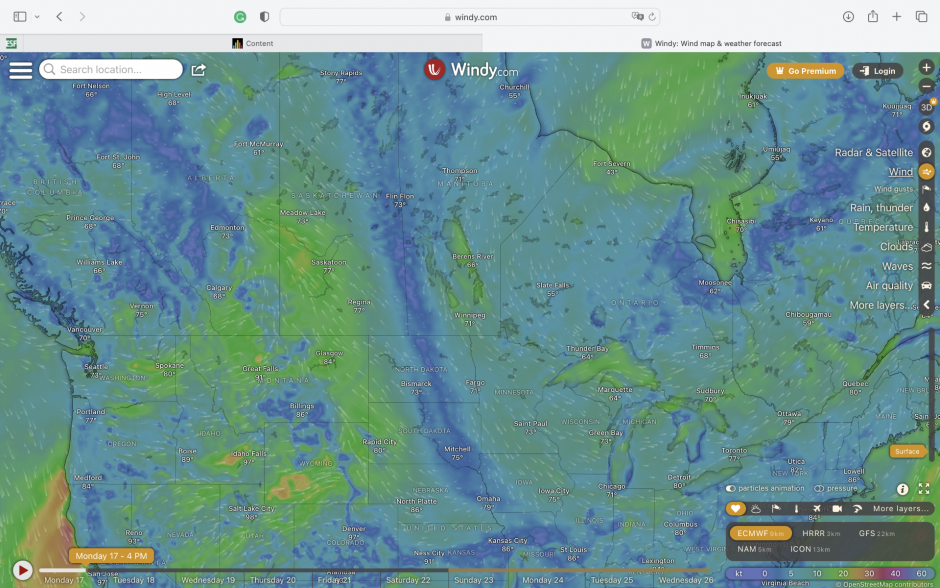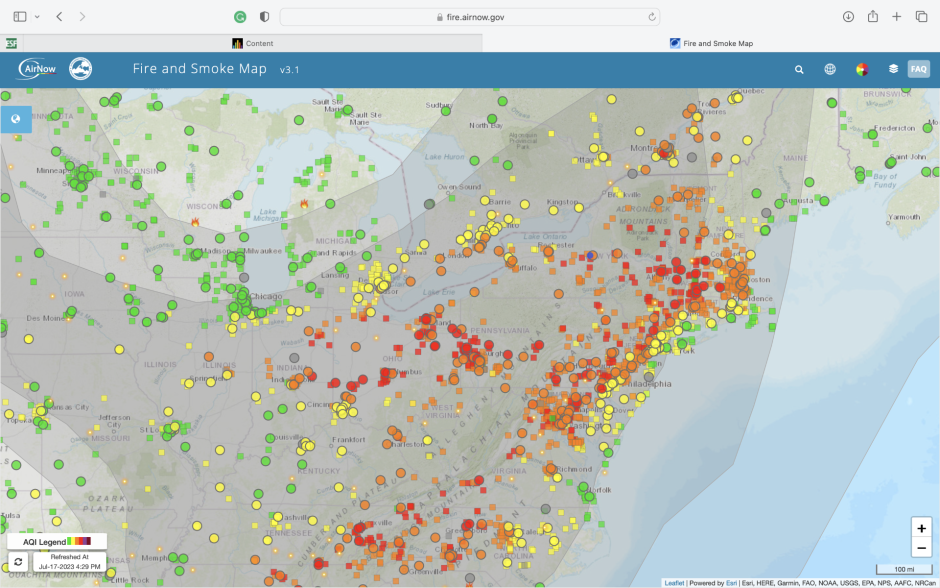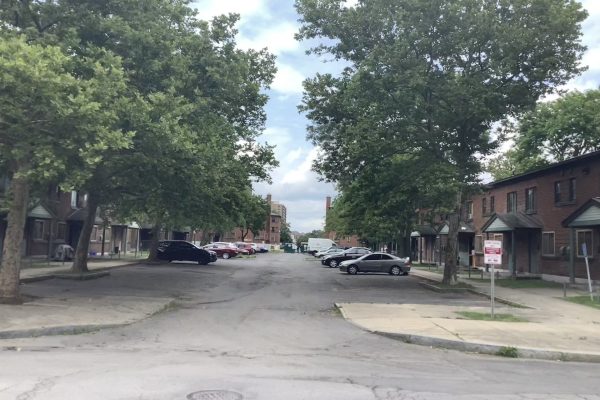

SYRACUSE, N.Y. (NCC News) — Smoky conditions returned to Central New York on Monday due to the rampant forest fires that have made their way throughout Canada this summer.
Professors at SUNY College of Environmental Science and Forestry believe that unhealthy air quality levels in the region might be the new normal in the warmer months. Assistant professor Dr. Andy Vander Yacht specializes his research in Forest & Fire Ecology and says that historic forest management and climate change are the main reason for these fires.
“The exclusion and suppression of wildfires, we know, leads to increasing wildfire risk. So we’re basically just postponing events into the future, and that’s kind of caught up with us. So the trends in wildfire over that region have doubled in the last decade,” Vander Yacht said.
Experts like Vander Yacht have developed something called the “Fire Suppression Paradox,” which describes why large-scale fires do so much damage in a short amount of time. “Basically we suppress all fires 98% of fires before they reach 300 acres in size. The remaining 2% of wildfires that reach greater than 300 acres in size, actually cause 98% of all costs and damages associated with wildfires,” Vander Yacht said.
An increase in the time and intensity of droughts throughout Canada leads to conditions that increase the likelihood of wildfires happening in the area.
According to the United States Environmental Protection Agency, Syracuse’s air quality level reached 152 at 2:00 p.m., passing the threshold of “unhealthy” for sensitive groups. When the fires initially began in Eastern Canada during early June, levels peaked at 235 resulting in a campfire-like smell.

Professor of resource economics and policy, Dr. David Newman says that people with pre-existing health conditions are still at risk. “Individuals with asthma and COPD are the most at risk, but at some level, that smoke becomes unhealthy for everyone,” Newman said.
With wind patterns expected to continue to travel southeast, expect those clouds over Syracuse just a little while longer.




